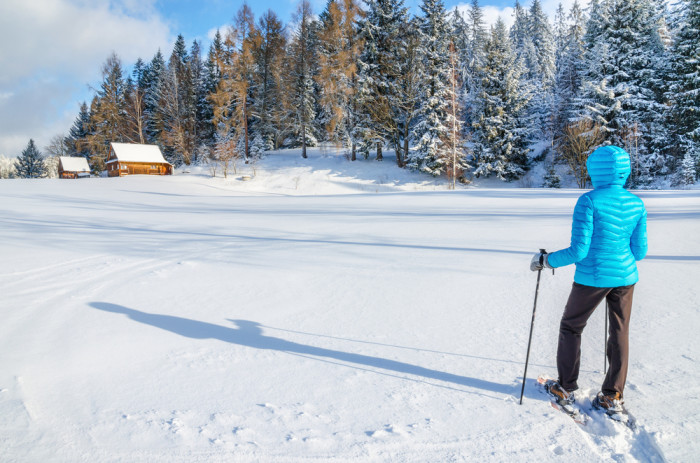Do You Have Frostbite? 3 Symptoms + 6 Solutions

It’s freezing outside but you’re still out there skiing, snowshoeing, fat biking, ice climbing, running, or skinning up a backcountry powder run. And, you know that all-too-familiar feeling when your fingers or toes start to burn or feel prickly.
Do you have frostbite symptoms? In order to detect frostbite early, when it’s most treatable, it’s important to recognize the symptoms. The first signs of frostbite include:
• redness and a stinging
• burning
• throbbing or prickling sensation followed by numbness. If this occurs, head indoors immediately.
Frostbite occurs when the skin (and sometimes the tissue beneath the skin) freezes due to prolonged exposure to cold temperatures. Depending on how long and how frozen the tissue, frostbite can result in severe, and sometimes permanent, damage.
“If you experience frostbite symptoms try to gradually bring feeling back into the body,” says board-certified dermatologist Amy J. Derick, MD, FAAD, clinical instructor of dermatology, Northwestern University. “Never rub frostbitten skin or submerge your hands or feet directly into hot water—use warm water or a warm washcloth instead. If you do not feel sensation returning to your body, or if the skin begins to turn gray, go to an emergency room immediately.”
No doubt, the best solution is to ward off frostbite in the first place. Here, Dr. Derick offers 5 ways to keep frostbite at bay.
6 Simple Ways to Avoid Frostbite
Dress in loose, light, comfortable layers: Wearing loose, light layers helps trap warm air. The first layer should be made of a synthetic material, which wicks moisture away from your body. The next layer should be insulating. Wool and fleece are good insulators and hold in more body heat than cotton. The top layer should be windproof and waterproof. A down parka and ski pants can help keep you dry and warm during outdoor activities.
Protect your feet and toes: To protect your feet and toes, wear two pairs of socks. The first pair, next to your skin, should be made of moisture-wicking fabric. Place a pair of wool or wool-blend socks on top of those. Your boots should also provide adequate insulation. They should be waterproof and cover your ankles. Make sure that nothing feels tight, as tight clothing increases the risk of frostbite.
Protect your head: To protect your ears and head, wear a heavy wool or fleece hat. If you are outside on a bitterly cold day, cover your face with a scarf, neck gaiter, or face mask. This warms the air you breathe and helps prevent frostbite on your nose and face.
Protect your hands: Wear insulated mittens or gloves to help protect your hands from the cold.
Make sure snow cannot get inside of your boots or clothing: Wet clothing increases the risk of developing frostbite. Before heading outdoors, make sure that snow cannot easily get inside of your boots or clothing. While outdoors, if you start to sweat, cut back on your activity or unzip your jacket a bit.
Keep yourself hydrated: Becoming dehydrated also increases the risk of developing frostbite. Even if you are not thirsty, drink at least one glass of water before you head outside, and always drink water or an electrolyte-packed sports drink before an outdoor workout. In addition, avoid alcohol, as it increases your risk for frostbite.
Kamagra oral jelly Online something to buy the most convenient way. He doesn’t demand from you any actions except how to visit the website. And in separate with goods necessary to you to put the end. To specify your address and to wait for the supplier to whom you will give money.


LET'S GET SOCIAL